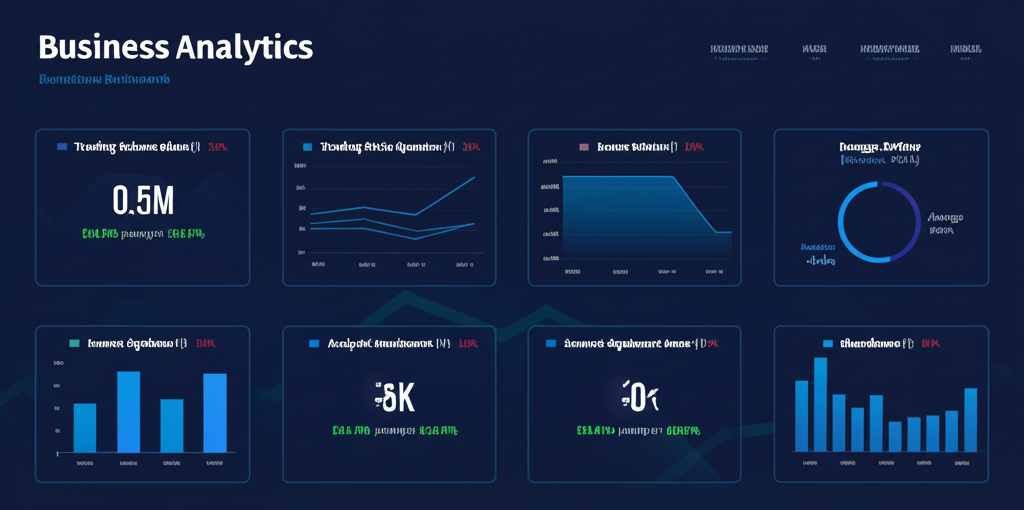The Challenge of Measuring IR Effectiveness
Investor Relations professionals face a unique challenge: how do you measure the effectiveness of a function whose impact is often indirect and influenced by numerous factors outside your control? While sales teams can point to revenue and marketing teams can track conversions, IR success metrics are more nuanced and multidimensional.
Yet in today's data-driven corporate environment, the ability to demonstrate the value and impact of your IR program is increasingly important—both for securing resources and for continuous improvement. This article explores practical approaches to measuring IR effectiveness through meaningful KPIs that align with your company's strategic objectives.
Aligning IR Metrics with Program Objectives
Before selecting specific metrics, it's essential to clearly define your IR program's objectives. While these will vary based on your company's situation, common IR objectives include:
- Achieving fair valuation relative to peers and intrinsic value
- Attracting and retaining high-quality, long-term institutional investors
- Building strong relationships with the right sell-side analysts
- Ensuring the market understands your company's strategy and value drivers
- Providing management with valuable market intelligence and feedback
- Supporting capital raising activities and strategic transactions
Your measurement approach should directly connect to these objectives, focusing on metrics that demonstrate progress toward your specific goals rather than generic IR activities.
Core IR Performance Metrics
While every IR program should customize its measurement approach, these core metrics provide a solid foundation for evaluating effectiveness:
1. Valuation and Trading Metrics
These metrics help assess whether your company is achieving appropriate valuation and trading characteristics:
- Relative valuation multiples: Track your key valuation multiples (P/E, EV/EBITDA, etc.) relative to peers over time, particularly following major IR initiatives or communications
- Valuation gap analysis: Compare market valuation to internal or external intrinsic value estimates
- Trading volume and liquidity: Monitor changes in average daily trading volume and bid-ask spreads
- Volatility metrics: Track stock price volatility relative to market, sector, and peers, particularly around earnings announcements
Measurement approach: Establish a quarterly dashboard comparing these metrics to relevant benchmarks and tracking changes over time. Focus particularly on trends following major IR initiatives or strategic announcements.
2. Ownership Quality and Stability Metrics
These metrics help evaluate whether you're attracting and retaining the right investors:
- Institutional ownership percentage: Track the overall percentage of shares held by institutions
- Ownership quality analysis: Monitor the composition of your shareholder base by investment style (growth, value, GARP, etc.) and alignment with your investment thesis
- Ownership stability: Measure average holding period and turnover rates among top institutional holders
- Targeting effectiveness: Track conversion rates from targeting efforts to meetings to actual investments
- Concentration metrics: Monitor ownership concentration among top holders and potential overexposure risks
Measurement approach: Conduct quarterly ownership analysis using data from your stock surveillance provider or IR platform. Develop a "quality score" for your shareholder base based on alignment with your ideal investor profile.
3. Analyst Coverage and Quality Metrics
These metrics help assess the effectiveness of your sell-side engagement strategy:
- Analyst coverage breadth: Track the number of analysts covering your stock and the firms they represent
- Coverage quality: Assess the depth, accuracy, and influence of research reports
- Estimate accuracy: Measure the variance between analyst estimates and actual results over time
- Sentiment analysis: Track the tone and key themes in analyst reports and recommendations
- Consensus management: Evaluate how effectively your guidance aligns with consensus estimates
3. Engagement and Outreach Metrics
These metrics help evaluate the reach and impact of your IR program:
- Investor meeting activity: Track the number and quality of investor interactions (one-on-ones, group meetings, conference calls)
- Investor targeting effectiveness: Measure conversion rates from outreach to meetings to investment
- Investor mix evolution: Monitor changes in your shareholder base composition (style, geography, turnover rate)
- Digital engagement: Track website traffic, content downloads, webcast participation, and email open rates
- Conference and non-deal roadshow ROI: Assess the quality and outcomes of investor marketing activities
4. Management Perception Metrics
These metrics help assess how effectively you're serving as the eyes and ears of management:
- Management feedback: Regular surveys of executives on the value and quality of IR intelligence
- Board satisfaction: Feedback from the board on IR program effectiveness and reporting quality
- Strategic impact: Instances where investor feedback influenced corporate strategy or capital allocation decisions
- Preparedness assessment: Management evaluation of IR support for earnings calls, investor meetings, and other events
5. Perception Study Metrics
Regular perception studies provide valuable quantitative and qualitative feedback:
- Message penetration: How well investors understand your strategy, value proposition, and key messages
- Management credibility: Investor perception of management's credibility and execution capability
- IR program effectiveness: Direct feedback on the quality and responsiveness of IR communications
- Disclosure quality: Investor assessment of your disclosure practices and transparency
- Competitive positioning: How investors view your company relative to peers
Building an Effective IR Measurement Framework
To implement a comprehensive IR measurement program, consider these best practices:
1. Focus on Outcomes, Not Just Activities
While activity metrics (number of meetings, conference calls, etc.) are easy to track, they don't necessarily reflect effectiveness. Balance activity metrics with outcome metrics that demonstrate impact:
- Instead of: Number of investor meetings held
Also measure: Quality of investors met and conversion to shareholders - Instead of: Number of conferences attended
Also measure: Quality of interactions and ROI from each event - Instead of: Volume of content produced
Also measure: Engagement with content and message retention
2. Establish a Balanced Scorecard
Create a balanced scorecard that includes metrics across multiple dimensions:
- Market metrics: Valuation, trading volume, volatility
- Ownership metrics: Investor quality, stability, targeting success
- Perception metrics: Message penetration, management credibility
- Operational metrics: Response time, meeting efficiency, budget management
3. Set Realistic Benchmarks
Establish appropriate benchmarks for each metric:
- Historical performance: Track improvement over time
- Peer comparison: Benchmark against relevant industry peers
- Best practices: Compare against recognized IR excellence standards
- Stated objectives: Measure against your own defined goals
4. Implement Regular Reporting Cadence
Establish a consistent reporting schedule:
- Monthly: Activity metrics, website analytics, ownership changes
- Quarterly: Valuation metrics, analyst coverage, management feedback
- Annual: Comprehensive program assessment, perception studies, strategic impact
5. Leverage Technology and Data Analytics
Utilize IR-specific tools and platforms to streamline measurement:
- CRM systems: Track engagement metrics and targeting effectiveness
- Surveillance tools: Monitor ownership changes and trading patterns
- Web analytics: Measure digital engagement and content effectiveness
- Perception study platforms: Gather structured feedback from investors
Case Study: Building a Comprehensive IR Measurement Program
A mid-cap technology company implemented a comprehensive IR measurement framework with the following components:
Quarterly IR Scorecard
- Valuation metrics: P/E relative to peers, EV/EBITDA trends
- Ownership metrics: Percentage of target investors owned, turnover rates
- Analyst coverage: Number of analysts, estimate accuracy, sentiment analysis
- Engagement metrics: Meeting quality scores, website analytics
Annual Perception Study
- Structured interviews with top 20 investors and 10 non-holders
- Quantitative ratings of IR program effectiveness
- Qualitative feedback on messaging and disclosure
- Competitive benchmarking against peer IR programs
Executive Reporting
- Monthly IR dashboard for management team
- Quarterly IR committee presentation
- Annual board review of IR program effectiveness
Results
After implementing this measurement framework, the company:
- Identified and addressed key messaging gaps that were impacting valuation
- Reallocated resources from low-ROI conferences to targeted non-deal roadshows
- Improved analyst estimate accuracy by enhancing guidance practices
- Increased ownership by target investors by 15% over 18 months
- Secured additional budget for IR initiatives based on demonstrated ROI
Conclusion: From Measurement to Improvement
Effective IR measurement isn't just about tracking metrics—it's about using those insights to continuously improve your program's effectiveness. By establishing a comprehensive measurement framework that focuses on outcomes rather than activities, you can:
- Demonstrate the strategic value of IR to senior management
- Allocate resources to the highest-impact activities
- Identify and address gaps in your IR program
- Track progress against strategic objectives
- Build credibility for the IR function within your organization
Remember that IR measurement should be viewed as an ongoing journey rather than a destination. As your company evolves and market conditions change, your measurement framework should adapt accordingly to ensure it continues to provide meaningful insights that drive program improvement.



